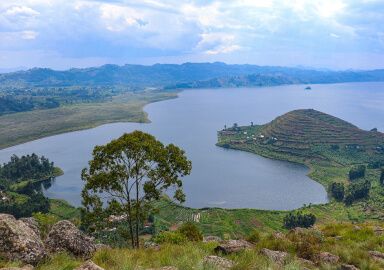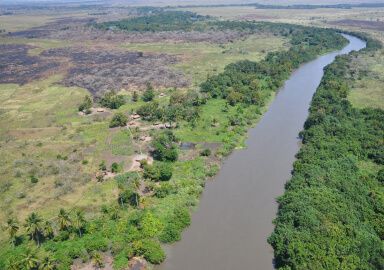Tilapia
If it was good enough for Pharaohs and St. Peter, it’s good enough for anyone: tilapia is one of the most common commercial fishes in the world today, and can be fun to catch, too!
View 8 listings
8
listings
–
price starting from
5
countries
–
to the nearest trip
Where and When?
Tilapia are found in tropical and subtropical freshwater environments around the world, including the United States, Central and South America, Asia, and Australia. Prime fishing locations include warm, shallow lakes, ponds, and slow-moving rivers with abundant vegetation. The best season for tilapia fishing is during the warmer months, from spring through fall, as they are most active in higher water temperatures. In the cooler months, they tend to move to deeper waters, making them harder to catch.
About Tilapia
Freshwater, plant-eating, smallish, not very striking in the looks department, and one usually encounters it as the lowest-priced fish filet in any of the world’s supermarkets - no wonder that for many people tilapia is the most boring fish ever. However, tilapias (and the name may refer to several dozen species in the Cichlidae family) are way more interesting than their reputation suggests - for a sports angler, too.
Tilapias are easily recognized by their deep, laterally compressed bodies, silvery to olive-green coloration, and a pattern of darker vertical bands along the sides. Hieroglyphs on papyrus and pyramids tell how this species has been farmed already in the Ancient Egypt, and it was tilapia that Apostle Peter was fishing for in the Sea of Galilee according to Mathew’s Gospel, so that the fish is known as St. Peter’s fish in some parts of the world.
They are primarily herbivorous, feeding on algae, plants, and detritus, though they will also eat small invertebrates when available. Tilapia reach sexual maturity at only several months of age, and the female can lay eggs up to four times a year. Males made nests, and females lay eggs there, then the females carry the fertilized eggs in their mouths until hatching (how they manage not to swallow the roe is a mystery). Most tilapia caught by anglers weigh between 1 and 5 pounds, with larger specimens reaching up to 10 pounds.
Growing rapidly in a variety of environments, tilapia are resilient to low oxygen levels, making them suitable for diverse ecosystems. Native to Africa and the Middle East, tilapia have spread globally due to aquaculture (it is currently the second most popular in fish farms around the world) and introductions into freshwater lakes, rivers, and reservoirs. However, tilapias thrive only in warm regions and most species can’t survive if the water temperature gets colder than 10-15C. Known for their mild, firm flesh, tilapia have become one of the most popular fish in the culinary world, commonly prepared grilled, baked, or fried.
How to Catch?
Tilapia are relatively easy to catch, making them a great choice for beginner and experienced anglers alike. Because they primarily feed on plant matter, natural baits such as corn, bread, and small dough balls are highly effective. Fishing with a simple float or bobber rig is often successful in shallow waters near the shoreline, especially around vegetation where tilapia like to graze.
For anglers interested in a bit more challenge, light tackle spinning with small lures or flies can be used to target tilapia in clearer waters. While they are not as aggressive as some other freshwater fish, tilapia can still put up a lively fight when hooked. Fly fishing with algae or nymph-like patterns can yield good results in environments where tilapia are feeding actively near the surface.







